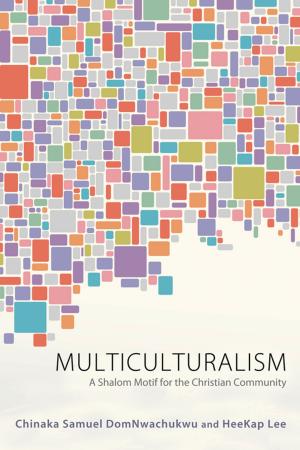Mothers on the Margin?
The Significance of the Women in Matthew’s Genealogy
Nonfiction, Religion & Spirituality| Author: | E. Anne Clements | ISBN: | 9781630877866 |
| Publisher: | Wipf and Stock Publishers | Publication: | May 1, 2014 |
| Imprint: | Pickwick Publications | Language: | English |
| Author: | E. Anne Clements |
| ISBN: | 9781630877866 |
| Publisher: | Wipf and Stock Publishers |
| Publication: | May 1, 2014 |
| Imprint: | Pickwick Publications |
| Language: | English |
The Gospel of Matthew opens with a patrilineal genealogy of Jesus that intriguingly includes five women: Tamar, Rahab, Ruth, she of Uriah, and Mary. In a gospel that has a strongly Jewish and male-orientated outlook, why are women incorporated? In particular, why include these four Old Testament women alongside Mary? Rejecting traditional as well as feminist views, Anne Clements undertakes a close literary reading of the narratives to discern how each woman is characterized and presented. All are significant scriptural figures on the margins of Israelite society. From this intertextual world established by Matthew, Clements explores why Matthew may have named these women in the opening genealogy and what implications their inclusion may have for the ongoing gospel narrative. Mothers on the Margin? argues that Matthew's Gospel contains a counter narrative focused on women. The presence of the five women in the genealogy indicates that the birth of the Messiah will bring about a crisis in Israel's identity in terms of ethnicity, marginality, and gender. The women signal that Matthew's Gospel is concerned with the construal of a new identity for the people of God.
The Gospel of Matthew opens with a patrilineal genealogy of Jesus that intriguingly includes five women: Tamar, Rahab, Ruth, she of Uriah, and Mary. In a gospel that has a strongly Jewish and male-orientated outlook, why are women incorporated? In particular, why include these four Old Testament women alongside Mary? Rejecting traditional as well as feminist views, Anne Clements undertakes a close literary reading of the narratives to discern how each woman is characterized and presented. All are significant scriptural figures on the margins of Israelite society. From this intertextual world established by Matthew, Clements explores why Matthew may have named these women in the opening genealogy and what implications their inclusion may have for the ongoing gospel narrative. Mothers on the Margin? argues that Matthew's Gospel contains a counter narrative focused on women. The presence of the five women in the genealogy indicates that the birth of the Messiah will bring about a crisis in Israel's identity in terms of ethnicity, marginality, and gender. The women signal that Matthew's Gospel is concerned with the construal of a new identity for the people of God.















